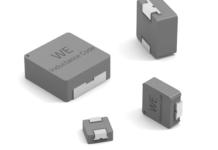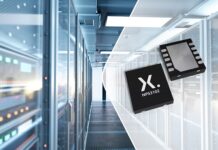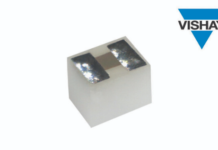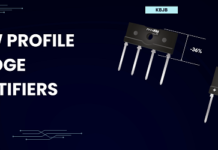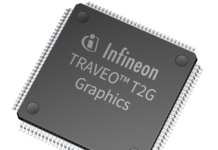
wiring for electric cars The market of electric cars is an ever-growing branch of the automotive industry. A number of factors contribute to this growth, not only economic and environmental ones, as demand for vehicles powered by alternative energy sources is also being stimulated by the local authorities in Europe, North America and Asia. While the popularity of the so-called EVs (electric vehicles) varies from market to market around the world, there is no doubt that it is growing and is likely to continue to do so.
Connectors and wiring for electric cars
As TME offers a range of products dedicated to electric cars, we would like to introduce our customers to some issues related to the power supply in such vehicles and the standards used worldwide.
A FEW WORDS ABOUT ELECTRIC CARS POWER SUPPLY
Apart from the drive unit (or units), there is of course one more core component of an electric car, namely the power source. In most cases, power comes from a package of rechargeable lithium-ion cells. A single vehicle can contain up to thousands of individual 18650 cells. The leading technologies of today are the Li-Ion NMC (the negative electrode contains graphite, while the positive electrode is made of nickel, manganese and cobalt) and Li-Ion NCA (containing aluminium oxides). Such cells are characterised by good electrical performance, energy density and relatively high reliability. It is worth mentioning here that vehicles using nickel-metal hydride batteries (known as NiMH) were introduced on the market until recently, but their implementation involved a number of complications (high operating temperatures, hydrogen emissions). The future, on the other hand, is more and more often associated with the use of environmentally friendlier and more durable Li-FePO4 cells, or lithium-iron-phosphate cells (also referred to as LFPs).
The primary energy storage is not the only power source used by EV manufacturers. Some fully electrified vehicles still use conventional acid batteries as an additional power source (e.g. for lighting). Moreover, supercapacitors are installed in charging controllers, motor controllers (frequency inverters), acceleration assistance systems and energy recovery systems (e.g. regenerative brakes). While supercapacitors are believed to become a successor to lithium batteries, as of now they still play only a supportive role to the methods that have already been implemented and widely tested.
The use of cell packages supplying heavy currents (high power density) combined with multi-phase motors provides electric vehicles with excellent dynamics (high torque even at low speeds) while eliminating the need for manual transmissions. Moreover, thanks to this design, electric cars are characterised by high reliability and quiet work, and yet, despite their growing popularity, they are still far from dominating the automotive market. Why?
Electricity – why not?
As it can be seen, the development of EVs is directly linked to advances in the field of propulsion technology and energy storage methods. These issues are reflected in a number of studies on consumer attitudes towards electric vehicles. While the “performance” of the vehicles is quite satisfactory for most potential buyers – drivers sometimes express doubt related to their range (i.e. the distance the car can travel on a single charge). Some sources even describe the psychological phenomenon of “range anxiety”. It is a type of anxiety that is triggered by three factors: (1) uncertainty whether the energy stored in the batteries will allow to reach the destination; (2) limited availability of the charging stations; (3) long charging time. It is the “range anxiety” that is often cited as a reason for not buying an electric car. It’s time to tackle these three concerns by answering the questions that bother consumers.
Also Read: What is a Transducer Used For?
Will I get there?
Electric cars feature precisely calibrated sensors, meters and sophisticated software that allows the predicted range of the vehicle to be estimated with a high degree of accuracy. Since the potential range is calculated by software, many vehicles available on the market perform calculations adaptively – taking into account the driver’s driving style and environmental factors, such as ambient temperature. What’s more, remote software updates allow the car’s range to be extended without any intervention in its construction. Finally, it’s also important to note the continuing advances in energy storage technology – statistics on electric vehicle capabilities become outdated rather quickly. When considering the purchase of a new car, it is worth making sure you have access to the latest information, and pay attention to the latest parameters published by manufacturers.
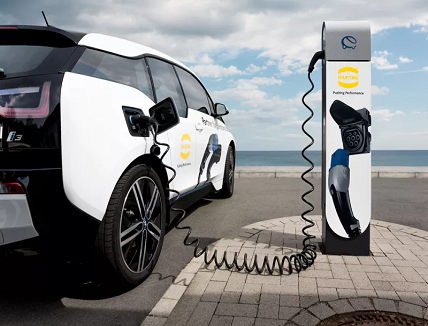
Where do I recharge?
Here the situation varies. In some countries, such as Norway, the availability of charging stations is no longer a problem. Unfortunately, there are also regions where the infrastructure dedicated to the EV industry is developing more slowly. However, it should be noted that using an electric vehicle in the city does not require frequent charging. In many cases, it is enough to plug the car to the dedicated charging station once a week, e.g. for a whole night. Yet, recharging “on the road” shouldn’t be a problem either – stations along main transit roads are more and more often equipped with chargers with excellent parameters, allowing to accumulate energy needed to travel hundreds of kilometres in a few hours.
Charging – how long will it take?
The answer, unfortunately, is not simple. Battery charging time depends on the station’s capacity, vehicle parameters and the wiring used. It is important to note that modern technologies virtually eliminate the problem of slow charging. The latest generation of solutions involves placing charging controllers inside the station (not in the car) – these high-current circuits supply energy directly to the cells located in the vehicle. For example, the specification of the CHAdeMO standard applied in Japan involves the use of DC lines whose power reaches up to 400kW. This means that a full charge of a typical city car would take less than half an hour. The new standards also take into account balanced energy management, such as the V2H system (vehicle-to-home), which allows the battery in the vehicle to work together with the solar system and home energy storage (charging can be done bi-directionally).
It should be noted here that the solutions described above are already being implemented – however, they are far from widespread. On a daily basis, consumers mainly come across three standards of chargers and connectors. These are: the predominant North American Type 1 (J1772); the European mandated Type 2 (sometimes incorrectly called MENNEKES); and the Chinese GB/T (guobiao, Chinese for “national standard”). Below, you’ll find a description of the capabilities of cables, connectors and chargers made in accordance with these standards.
CONNECTORS AND CABLES AVAILABLE FROM TME
Since the comfort of drivers depends on the quality of connectors and cables, we have included in our catalogue solutions from recognised and proven brands: HARTING and Green Cell. At TME, products dedicated to electric vehicles are intended for three groups of customers: manufacturers of charging stations; service providers who implement EV installations in public, commercial and domestic spaces, and consumers looking for high-quality wiring for their vehicles.
Type 1
Type 1 (J1772) is most common in North America (where it is commonly referred to as the J plug), although it is also applied in some cars distributed in Europe (in particular those manufactured before 2014). The J1772 connection provides for a single-phase alternating current (AC) supply to the vehicle and a maximum power output of 19.2kW. In the case of connectors offered by HARTING, the power rating of the connectors made in accordance with this standard reaches up to 10kW and they are factory fitted with 5m- or 7.5m-long cables. Even the maximum electrical parameters of Type 1 do not allow for quick “recharging” of the vehicle (e.g. during a short break in the journey), but every public charging station should be equipped with this type of connector – they are compatible with many older vehicle models. Their specification will be satisfactory in places intended for long (e.g. all-night) charging.

Type 2
Type 2 connectors derive from a product developed by MENNEKES, which is why they are sometimes incorrectly referred to by that brand’s name (in the USA, however, they are referred to as type J3068). In 2014, at the request of ACEA (European Automobile Manufacturers’ Association), this standard has been recognised as an applicable standard in the European Union, and thus sockets of this type must be fitted in all cars distributed in the EU. Type 2 cables by HARTING available from TME supply power up to 22kW and (unlike Type 1) are compatible with the much faster, three-phase charging method. A compact car, after an hour of being connected to a charger with such parameters, can accumulate enough energy to travel over 100 kilometres. Like the J1772, they feature pilot pins and a high-current ground pin – they also offer higher protection rating (IP55 instead of IP44). At TME, you can also purchase the Type 2 socket (with 0.7m leads for connecting wires) that is a ready-made component for developing compact charging stations.
In addition, our offer includes Green Cell charging cables. This is an essential accessory for every electric car, allowing you to use stations equipped only with a socket. The cables are supplied with a practical case and come in 5 and 7 metre versions, providing comfortable connection even for large electric vans.

Type 2 connectors derive from a product developed by MENNEKES, which is why they are sometimes incorrectly referred to by that brand’s name (in the USA, however, they are referred to as type J3068). In 2014, at the request of ACEA (European Automobile Manufacturers’ Association), this standard has been recognised as an applicable standard in the European Union, and thus sockets of this type must be fitted in all cars distributed in the EU. Type 2 cables by HARTING available from TME supply power up to 22kW and (unlike Type 1) are compatible with the much faster, three-phase charging method. A compact car, after an hour of being connected to a charger with such parameters, can accumulate enough energy to travel over 100 kilometres. Like the J1772, they feature pilot pins and a high-current ground pin – they also offer higher protection rating (IP55 instead of IP44). At TME, you can also purchase the Type 2 socket (with 0.7m leads for connecting wires) that is a ready-made component for developing compact charging stations.
In addition, our offer includes Green Cell charging cables. This is an essential accessory for every electric car, allowing you to use stations equipped only with a socket. The cables are supplied with a practical case and come in 5 and 7 metre versions, providing comfortable connection even for large electric vans.
Green Cell EV charging cables
GB/T Type
When discussing the most popular connectors for electric vehicles, the GB/T standard cannot be omitted. All electric vehicles manufactured in China are equipped with these sockets. Their specifications are similar to those of Type 2 and they support three-phase charging. The GB/T standard features HARTING connectors with the highest rated power: 24.4kW. Connectors of this type should be installed primarily in charging stations intended for the Asian market.
Products intended for the Chinese market must be equipped with a GB/T connector
Text prepared by Transfer Multisort Elektronik Sp. z o.o.



